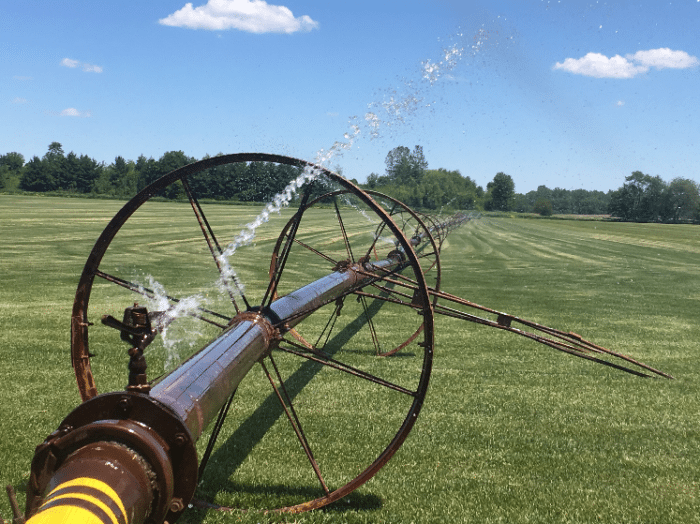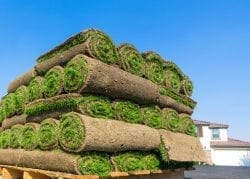Proper Watering Is the Key to Sod Health Before, During, and After Dry Spells
When to water, how much water to use, what time to water, and under what conditions are detrimental factors for the results of your watering efforts. An inappropriate irrigation strategy can cause your lawn to brown quicker and be less resistant to adverse conditions.
How much or how long?
It is inappropriate for us to suggest a particular length of time or amount of water to put down because every lawn and irrigation system will have different properties; therefore, differing responses to those properties. The best strategy for the amount of water is to learn your lawn by experimentation. You want to water for as long as it takes to get moisture down about 6” into the soil. Watering deep and infrequently (every five days), will help your lawn build drought resistance and keep it healthy.

When to water?
If you’re looking for how to water new sod, please refer to our guide on sod installation. When to water is extremely vital because if you water at the wrong time, it can make your efforts close to worthless. Having said that, when should you water? The best time to water is in the early morning when the air temperature is at its low point, the wind is slow, and the sun doesn’t evaporate the water.
Now you may ask, why would I want to get up at 5 AM to turn on the sprinkler and turn it off again before leaving for the day? You don’t have to do that. Many irrigation systems have timers built into them. And if you’re using a garden hose with a sprinkler, you can purchase a timer for as little as about $10. If you have an underground irrigation system, just set the timer for those early morning hours.
Avoid watering at night and the in the middle of the day (doesn’t apply to new sod, check out our guide on installing sod).
What time of the year should I water? What about rain?
It doesn’t do much good to put an exact date because every season brings different conditions. It is more appropriate to start watering based on when your lawn gets stressed from heat and dryness. Visual stressors can be discoloring, slow growth, and a crunchiness when walking on the sod.
My grass is brown during a dry spell. Does that mean I need to replace it?
Not necessarily. When grass becomes stressed, it goes dormant. In the dormant state, the grass stops growing and turns brown to conserve resources that are becoming scarce in its environment. Mistaking dormant grass for dead grass can be easy. And the first thing most people want to do is water. However, many areas in Chicago and the surrounding suburbs put watering bans in place during hot, dry periods, which means you have to wait it out. When you can water again and before calling it quits on the sod, try to spring it back to full health with a few remedies:
- 1) Water your lawn using the tips we suggested in this piece.
- 2) Keep foot traffic to a minimum. Traffic puts undue stress on a healthy or dormant lawn.
- 3) Fertilize with a balanced blend like our 12-12-12 fertilizer.
- 4) Be patient.
The ideas presented in this article are only generalized tips. You will have to take what you’ve learned here and leverage it with what you observe or learn about your yard. Feel free to contact us here at Dunteman Turf Farms with any of your lawn needs.



